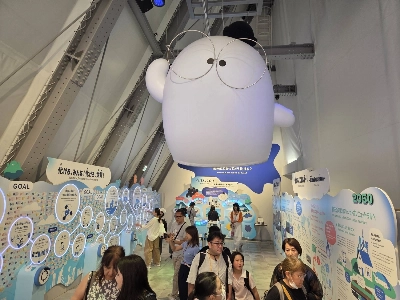There was a time when watching sports required no thought at all. You turned on the television, and the game was simply there — no passwords to enter, no plans to manage, no decisions beyond when to grab a drink.
In Japan, free-to-air broadcasts have long formed the backbone of sports culture. They made fandom democratic: Anyone with a television could share a national team’s triumph or heartbreak in real time. Even as much of the world migrated toward paid streaming, Japanese fans could count on basic TV channels to deliver the big moments.
Until now.
In August, Netflix acquired the Japanese broadcast rights to the 2026 World Baseball Classic, a clear sign of how fast the landscape is shifting. The move wasn’t just a business story; it was a cultural one. A tournament that once united the nation around living-room screens will soon require an account, a subscription and a bit of digital fluency — plus another recurring fee and one less chance to discover a game organically.
Japan, where viewing habits have been slow to change, is now fully in the streaming era, though not everyone is ready to come along for the ride.
On one hand, streaming is a dream realized: Fans can watch their teams anytime, anywhere, with a tap of a finger. On the other, the dream comes with fine print — an endless chase for the right platform, the right package and enough room in the household budget to keep the games on.
“I spend about ¥11,300 per month to watch sports on cable and streaming services,” said Tadashi Yokoyama, a 67-year-old self-proclaimed sports fanatic in Tokyo. “For me, time is as much of an issue as money. Between work and subscriptions, I’m already stretched, and I still attend games on top of that. That doesn’t come cheap either.”
The numbers make it clear that the shift from traditional TV to paid streaming is happening. In 2024, 24.2% of people in Japan were watching sports digitally — up sharply from 11.5% in 2018, according to Sasakawa Sports Foundation data.
No single service offers complete coverage, so devoted fans often find themselves signing up for multiple subscriptions, which can easily exceed ¥100,000 annually — nearly one-third of the average monthly wage for a full-time worker in Japan.
“I watch NFL on cable, NBA and LPGA on Wowow, MLB on Amazon Prime, Abema and NHK BS, and boxing on Netflix. I canceled Rakuten NBA and DAZN because they were too expensive. Those two would’ve added up to ¥9,000, money I’d rather put toward lunches with students,” said Yokoyama, who works in education and study-abroad guidance.
“Content is scattered, so it would be helpful to have a site listing all sports, their schedules and which service streams them. Right now, each platform only posts its own broadcasts, so having everything in one place could get more people watching — after all, if you don’t know a game is on, you won’t tune in.”
Yokoyama’s struggle is now shared by many in Japan, where keeping up with beloved leagues, teams and athletes means piecing together multiple streaming services.
For instance, a soccer fan in Japan might use DAZN (¥4,200/month) to watch the J. League while also subscribing to U-Next (¥2,189/mo) or Wowow (¥2,530/month) to catch Premier League or Champions League games, respectively.
A baseball fan who subscribes to Spotv Now (¥2,000/month) to watch MLB games with Japanese commentary and Sky PerfecTV (¥4,483/month) to stream all 12 NPB teams would still have to pay an additional ¥890 to watch the WBC next March, which will be available to Japanese audiences only on Netflix. Previous tournaments were broadcast for free on broadcast channels.
As more premium sports content moves behind paywalls, fans are facing a cost-value dilemma.
A couple of months ago, a user on Yahoo Chiebukuro, the Japanese equivalent of Quora, a question-and-answer platform, posted this question: Do you think DAZN’s monthly fee is expensive for someone who only wants to watch the J. League?
Today, DAZN offers everything from soccer and baseball to basketball and motor racing, positioning itself as Japan’s closest thing to an all-in-one sports hub. But a few years ago, it came even closer to that ideal — streaming the Premier League, MLB, the WTA Tour and more, all at a lower subscription price. It was ahead of its time, though ultimately a model too ambitious to sustain.
The reactions online were blunt: “Crazy expensive.” “It feels expensive, especially since it used to be ¥1,800.” “It’s a luxury. I wish we could just pay about ¥500 per match, considering I’m already paying for other subscriptions.” “True, it’s pricey. I’m subscribed myself, but it’d be great if there were options for fans who only follow certain clubs or leagues.”
The supporters: “I watch stuff besides the J. League, so it doesn’t bother me.” “Paid yearly, it costs less than most club season tickets. Plus, you get every game, home and away, so it’s not a bad deal at all.” “Call it too expensive, and maybe you’re not a real fan. Those who really care will pay to watch.”
Yokoyama says the fee hikes — DAZN, in 2024, raised its monthly price for subscribers from ¥3,700 to ¥4,200 — make sense as they likely reflect higher broadcast-rights costs that ultimately benefit teams and players.
According to DAZN spokesperson Hiroomi Tokumasu, the company’s recent price changes are part of its focus on long-term sustainability and growth, supported by continued investment in content and technology. As part of that strategy, he explained, DAZN began full-scale streaming of the B. League this season, completing its coverage of Japan’s three major professional sports leagues on a single platform. Tokumasu added that the company plans to keep expanding its lineup of premium domestic and international rights, giving fans more opportunities to follow Japanese athletes at home and abroad.
And while opinions are mixed on the price hikes, the growing appetite for sports streaming suggests that services like DAZN are becoming an integral part of how Japanese fans watch and support their favorite teams.
A 2023 survey by Appliv, a Japanese app review and information site, found that 56.7% of 660 people age 10 to 60 who had watched sports broadcasts in the past six months had recently subscribed to or used a streaming service specifically to watch sports, with Amazon Prime Video, Abema and DAZN ranking as the three most-picked services.
Among 374 people who had recently subscribed to or used a streaming service, the most common reason was exclusive access to a specific game (157), followed by viewing flexibility (140) and affordability (137).
Baseball (195), soccer (190) and boxing (82) emerged as the top three sports driving recent streaming subscriptions. When it came to devices, 40.6% relied on smartphones most often, followed by televisions (24.3%), computers (23.8%) and tablets (11.2%).
The value of live sports remains undeniable, yet fans are increasingly having to make difficult decisions as households tighten spending amid rising living costs.
“Economic downturns make entertainment spending like streaming services feel burdensome, and they are often the first expenses to go,” said Shinichi Yamaguchi, a data expert and associate professor at the International University of Japan. “That could further shrink the number of people who watch or take part in sports.”
Paywalls and overlapping subscriptions aren’t accidental — it’s the direct result of monetization strategies around broadcast and streaming rights, which have become as critical to sports revenue as ticketing, merchandise and sponsorship.
The impact of this shift is already being felt by fans, who are discovering that marquee events once freely accessible are now locked behind exclusive platforms.
Boxing fans, for instance, couldn’t catch Naoya Inoue’s Sept. 14 title defense on terrestrial TV; it was available only via Docomo’s Lemino streaming service. With the exception of the Olympics and sumo, combat sports have all but disappeared from free-to-air television.
The same uncertainty clouds next summer’s FIFA World Cup. The event was broadcast free on Abema in 2022, but rising costs and stalled negotiations now leave fans unsure of who will win the rights to show the matches.
While many fans view the shift with concern, broadcasters remain largely optimistic. DAZN’s Tokumasu described the trend as a positive one, calling it “a real turning point — not just for sports, but for how people watch content overall.”
But experts warn that optimism alone may overlook what’s being lost.
“The shift toward streaming may be inevitable, but it risks shutting out casual viewers,” Yamaguchi said. “Terrestrial broadcasts once gave anyone — from people who don’t normally follow games to children — a chance to connect with sports. Paywalled platforms, in contrast, can limit viewership to hardcore fans and reduce the sport’s overall reach.”
“The real challenge is earning revenue while ensuring sports remain open to people of all ages.”























With your current subscription plan you can comment on stories. However, before writing your first comment, please create a display name in the Profile section of your subscriber account page.